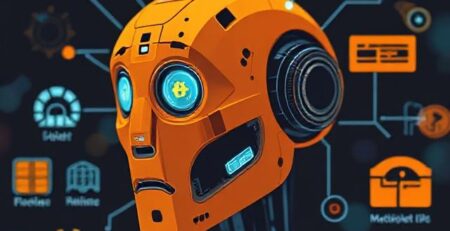How Generative AI Is Used In Drug Discovery?
Developing innovative drugs to fight diseases has often resembled a daunting quest in the vibrant world of pharmaceuticals. The advent of Generative AI (Generative AI) has infused fresh hope and efficiency into this challenging journey. Our goal in this article is to explore how Generative AI is reshaping the drug discovery process and how it has had a profound impact, particularly since the COVID-19 pandemic began.
Why there is a need for change in the drug discovery
Drug discovery has typically been a time-consuming, expensive, and trial-and-error process. A new drug’s introduction to the market has been a Herculean endeavor that frequently takes more than ten years and costs billions of dollars.
Only 10% of candidates have made it to clinical trials, and success rates have been depressingly low. A revolution in pharmaceutical research and development was necessary to address these issues as well as the urgency created by international health emergencies like COVID-19.
Introducing generative artificial intelligence
Deep learning, reinforcement learning, and Generative Adversarial Networks (GANs), all parts of generative AI, have become a potent ally in the search for new drugs. The process of developing new drugs has been sped up, prices have been decreased, and the possibility of finding potent drug candidates has increased thanks to its capacity to create unique molecular structures and optimize those that already exist.
Generative adversarial networks (GANs)
GANs, one of the gems of Generative AI, have transformed drug development. A generator and a discriminator network engage in a competitive dance to drive their operation. The discriminator judges the quality of the synthetic molecular structures created by the generator by contrasting them with actual data. The capacity of the generator to produce structures with particular characteristics, like high binding affinity or low toxicity, is improved through this adversarial process.
Variational Autoencoders (VAEs)
VAEs, another potent technique of Generative AI, use a network of encoders and decoders. The encoder shrinks molecular information into a latent space of lesser dimensions, while the decoder revives it as molecule structures. The latent space is sampled using points, and VAEs produce a variety of unique structures with the appropriate features.
Reinforcement learning (RL)
RL teaches agents to produce molecular structures with desirable qualities by subjecting them to rewards or punishments, similar to how people learn through interaction. RL refines the created structures for preclinical and clinical testing when paired with other Generative AI techniques, such as GANs or VAEs.
Industry Adoption and Applications
Drug development has been significantly changed by the concept of generative AI, which is not simply a theoretical idea. Its uses span the whole pharmaceutical industry, including:
Generating unique Molecules: By creating unique chemical structures that are suited to certain needs, Generative AI raises the likelihood of discovering promising medication candidates and eliminates the need for time-consuming trial and error.
Boosting existing Compounds: In addition to developing new molecules, Generative AI also improves already existing ones, boosting their efficacy, safety, and other characteristics, resulting in more effective treatments.
Reducing Experimental Testing: By predicting the biological activities of produced structures, generative AI reduces the need for extensive experimental testing, which saves time and money.
Drug Discovery with Generative AI in the Future
The importance of generative AI will increase as the pharmaceutical industry develops more accurate and tailored treatments. Although this technology is being used more and more, many environments have not yet seen its full potential. The future is promising, though, thanks to continuous developments and joint initiatives between drug corporations and AI researchers.
The speed at which change has occurred over the last few years emphasizes the revolutionary potential of Generative AI in drug discovery. Thanks to this ground-breaking technology, breakthroughs, accelerated drug development timeframes, and enhanced therapies are on the horizon.
Bottom Line
In addition to being a technological accomplishment, generative AI offers the pharmaceutical business a ray of optimism. Drug discovery is sped up, becoming more effective and economical in the process, ultimately helping patients all over the world. Generative AI serves as a testament to our capacity to use technology to overcome the most significant obstacles in medicine as we navigate the complicated world of healthcare, bringing us one step closer to a future with more effective medicines and improved healthcare outcomes.












